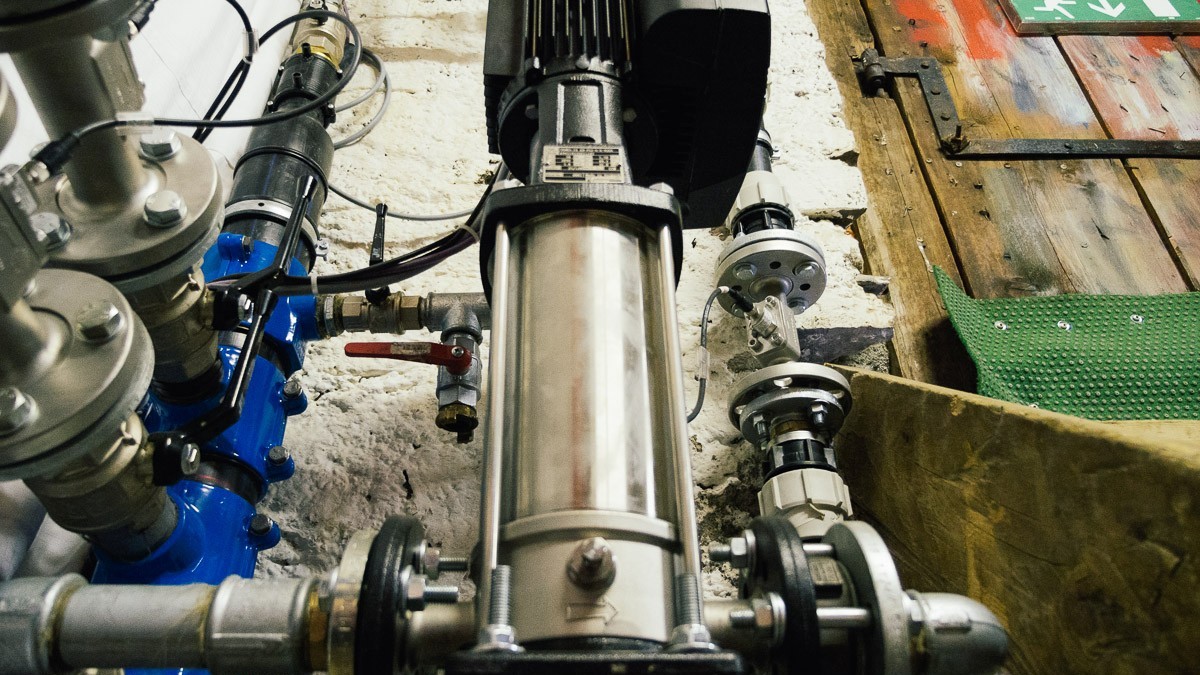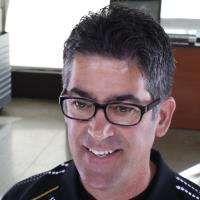6 Feb 2018
Have you ever wondered why the water pressure in some hotels is much better than that in others?

Founded in 1945 and based in Denmark, Grundfos develops water solutions for the world. They set standards regarding innovation, efficiency, reliability, and sustainability. They are a pump company touching millions and millions of people every day. Grundfos solutions help their partners and customers move water to where it is supposed to go — to provide drinking water for the smallest villages and the highest skyscrapers, treating and removing wastewater, and bringing heat and comfort to the world, or cool it down if needed. [grundfos.com]
Grundfos is regarded as a global leader in advanced pump solutions and a trendsetter in water technology. They contribute to global sustainability by pioneering technologies that improve quality of life for people and care for the planet.
When designing a multi-story building, running water is needed on every floor. As a building increases in height, with gravity as the enemy, the ability to pump water to higher levels becomes more challenging. This is an aspect of Architecture, Engineering, and Construction where Grundfos expertise comes into play. As the number of floors increases, so must the size of the piping and power of the pump increase to boost water to the upper floors. Given a number of floors, how big does the water booster solution need to be? How powerful does it need to be?
Grundfos has a website to help their customers answer these very questions.
With a step-by-step process and a slick user interface, the Grundfos website is state of the art in helping architects and engineers specify and order piping and pumps for their building projects. This applies to new construction as well as piping and pump replacement. Though state of the art, Grundfos asked a simple question "Can we do better?" The answer was "Yes." Grundfos worked with a company called Xinaps to simplify the process of water booster selection based on multiple cost scenarios and 3D visualization.
Xinaps empowers design professionals to design more efficiently by minimizing manual work and utilizing building data. Their tools are the first to validate elements within a building model and visualize the outcome directly within the 3D design software. Founded in 2015, they are a forward-thinking team that creates smart model validation tools within design software because they believe the building design process needs to be simplified and optimized. Their clients play an active role in tailoring the features of each solution. Hand in hand, they work hard on shaping innovative architectural tools right within Autodesk Revit. [xinaps.com]
Xinaps is developing a solution that incorporates the expertise in pump solutions and water technology of Grundfos and seamlessly integrates with a building design workflow. So the next question is "How are they doing that?"
Xinaps is an Autodesk Forge partner. Forge is our application program interface (API) platform and supporting materials (sample code, manuals) as well as a community of developers who uses those APIs. Although Forge is intended for our customers and 3rd party developers to be able to use our web services, we use Forge for our development of the cloud-based services that we offer. Customers like Xinaps can leverage Forge in the same ways that we do.
Forge is defined by 7 groups of APIs.
- Authentication
- Design Automation API
- Reality Capture API
- Data Management API
- Model Derivative API
- Viewer
- Webhooks API
For the Grundfos solution, Xinaps used 4 of them:
-
Authentication
Authentication for Forge is based on the industry standard OAuth, specifically OAuth2, that provides for token-based authentication and authorization. Xinaps logs into Forge to protect the security of Grundfos and Grundfos' customers' data.
-
Data Management API
The Data Management API includes its own Object Storage Service. The Object Storage Service allows Xinaps' solution to download and upload raw files (such as PDF, XLS, DWG, or RVT).
-
Model Derivative API
The Model Derivative API lets Xinaps represent and share designs in different formats, as well as to extract valuable metadata into various object hierarchies. With this API, Xinaps can extract metadata from Revit files pertinent to piping sizing. Xinaps can translate a design into different formats, such as STL and OBJ, but the key one is that they can have it translate a design into SVF for rendering files in the Viewer.
-
Viewer
The Viewer is a WebGL-based, JavaScript library for Xinaps' use in 3D and 2D model rendering. The Viewer communicates natively with the Model Derivative API to fetch model data, complying with its authorization and security requirements. The Viewer converts the SVF (Simple Vector Format) into WebGL that the browser can display natively without an additional plug-in. Allowing Forge to render their files in the Viewer is a hassle-free way for Xinaps to share Grundfos/customer data without having to deal with all of the peculiarities of these various browsers.
Autodesk Forge enables Xinaps to streamline the Grundfos water booster selection process based on building requirements. Typically, a building model undergoes multiple iterations throughout the design stage, which sometimes requires recalculation of the type of water booster solution. Since the information is traditionally disconnected from the BIM model, the analysis would have to be repeated. Grundfos wants to simplify this process by linking the water booster tool directly to the building model. This will assist an engineer in making the right choice through real-time analysis and visualizations.
Using the power of Forge, Xinaps is bringing Grundfos' expertise to the cloud. This not only enables easier data exchange and smoother collaboration but also ensures the latest water booster calculations are readily available to the right person. The cloud app has not launched just yet, as Xinaps and Grundfos are looking for enthusiastic MEP engineers who'd love to help shape the best features and design. If interested, sign up here.
Autodesk has always been an automation company, and today more than ever that means helping people make more things, better things, with less; more and better in terms of increasing efficiency, performance, quality, and innovation; less in terms of time, resources, and negative impacts (e.g., social, environmental). Autodesk Forge is an integral part of our automation plans. The improved process that Xinaps is creating for Grundfos via Forge is a perfect example of this.
